After the great Texas blizzard of 2017 the remaining frozen indigo needs some attention. You can see how much indigo remains in the Indigo Suffrucitosa. I will pick and strip them before the winds take them down for me.
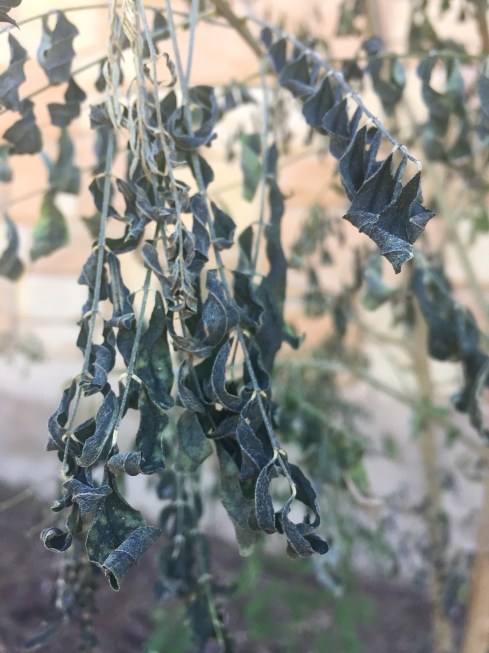
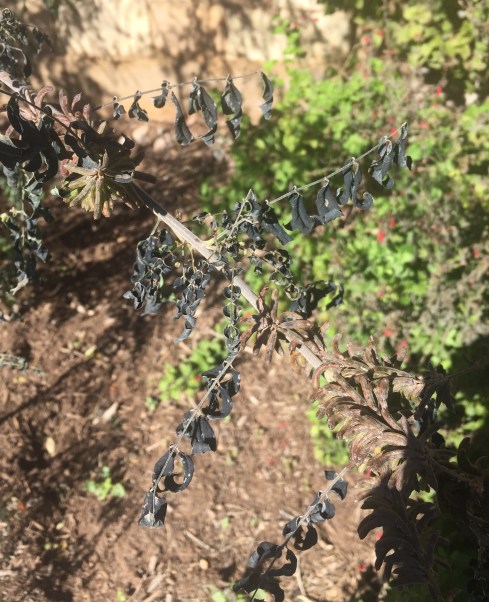 My day will be spent slowly trimming more branches in anticipation of the winter winds.
My day will be spent slowly trimming more branches in anticipation of the winter winds.
Slow is the operative word as I am still recovering from an October back TLIF surgery. I’ve graduated from my cane, I can start driving in a limited basis and start physical therapy next week to restore my core strength. I had a major victory this morning when I could lace my boots myself. My husband is glad to see me further along the recovery road also. I had a set back earlier this week when I tried to do too much too soon. My body set me straight yesterday. Patience is not one of my virtues. Gardening and the dye pot help some.
Besides harvesting the frozen leaves indigo the seeds have matured and need to be gathered, dried and winnowed.

I am amazed to report that this year’s volunteer crop outside the fence line did not get a nibble this season from the ever insatiable deer herd. Next year I will get more ambitious and purposely plant seed along the irrigation line.
The test bed on the west side did well above my expectations. It was exposed to the hot August and September sun and held up. More will be planted there next year. I think regular irrigation will make that a viable bed for future use.
The Japanese Indigo has gone for the season. The seeds are drying and the bed needs to be cleared.
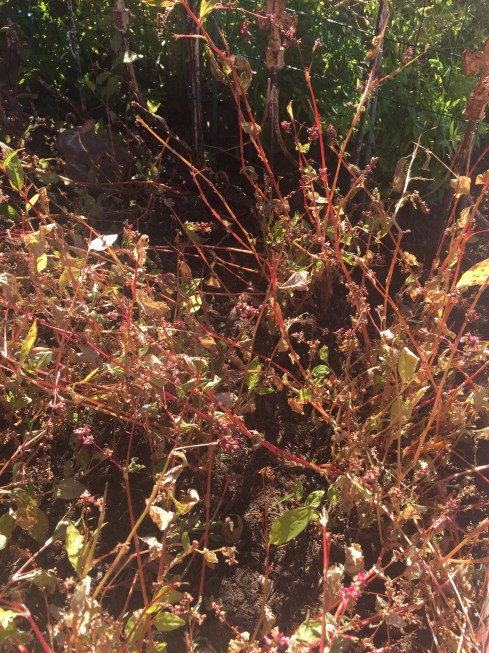
The critter that cannot be caught waited politely thru the growing season before making an incursion under my Fort Indigo fence. We will continue our quest to capture & relocate the grub digger.
Wishing everyone a Happy Holiday and a New Year as the year draws to an end. If I decide to sell seeds for next spring I will post here. Enjoy your garden dreams for 2018.
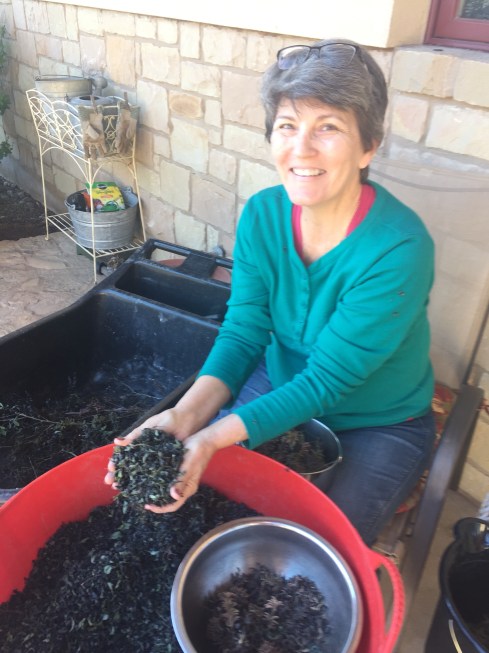









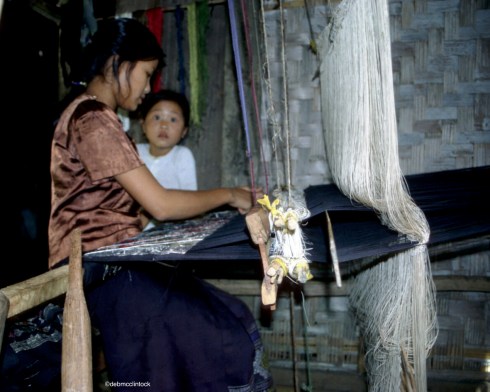




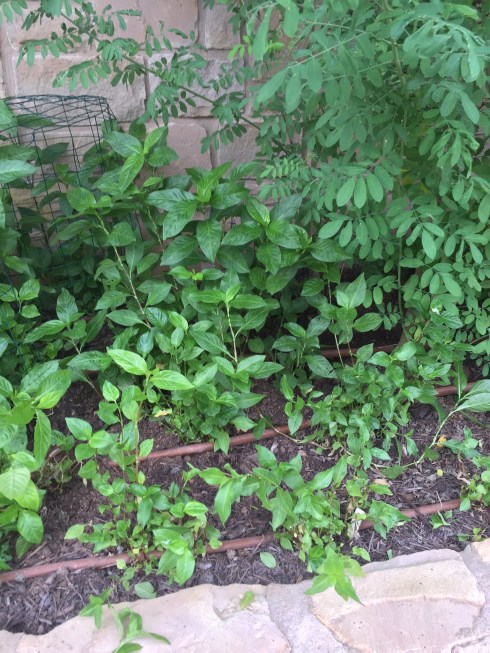
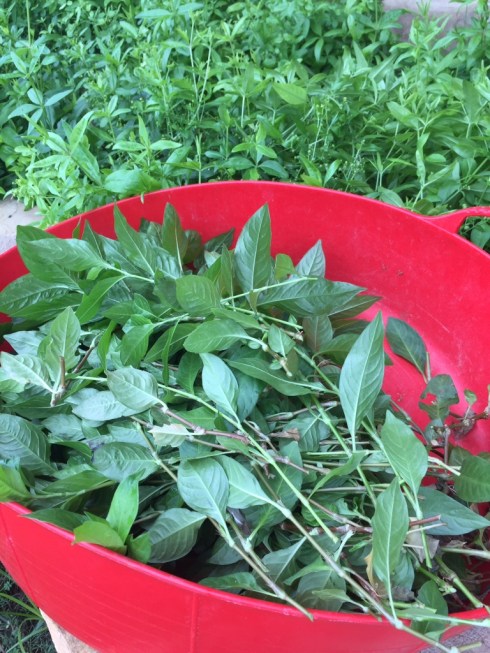
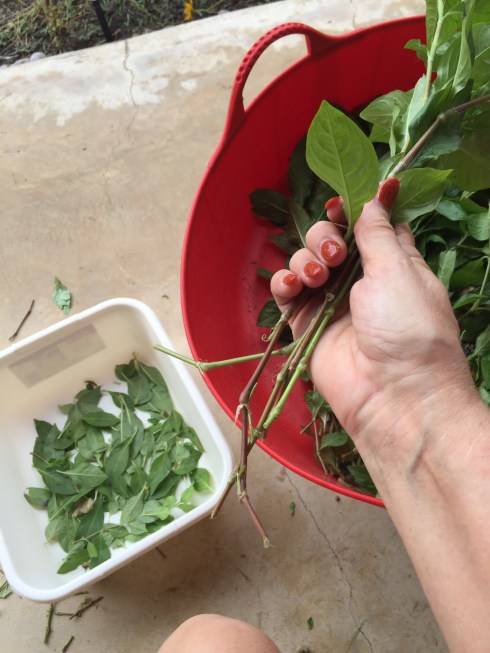
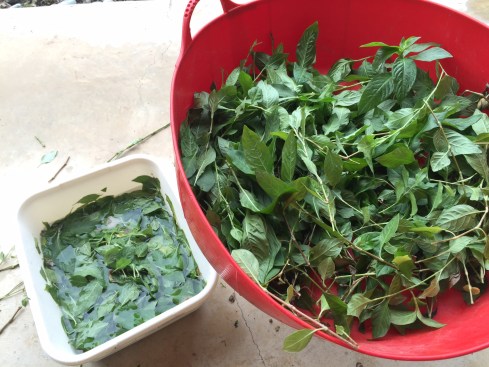




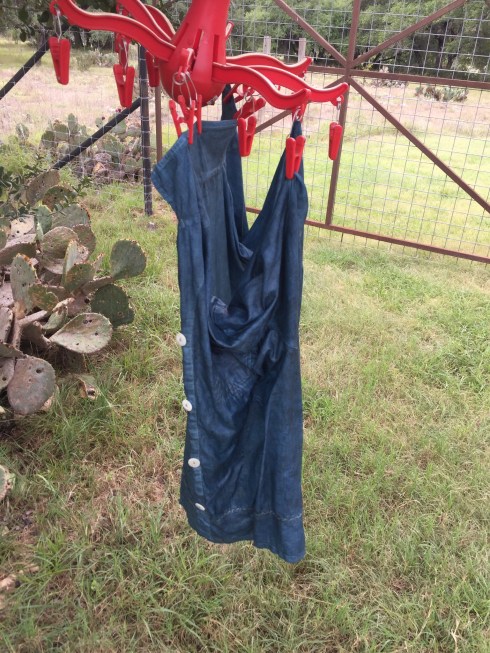
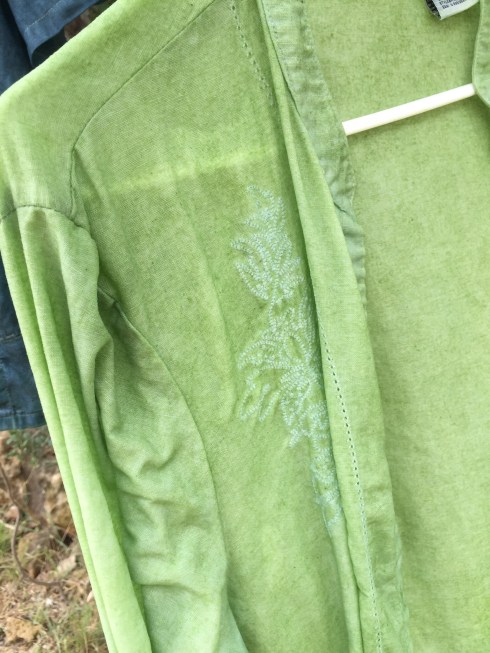
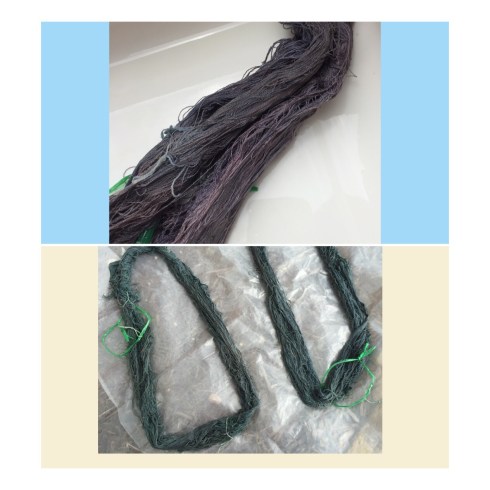
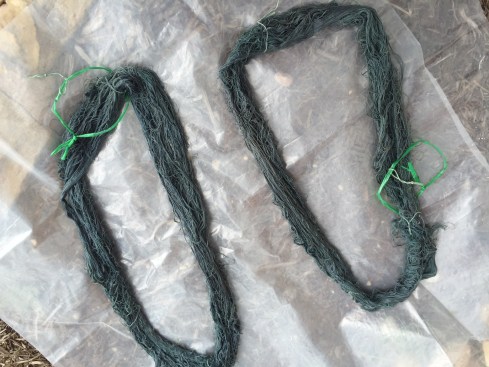

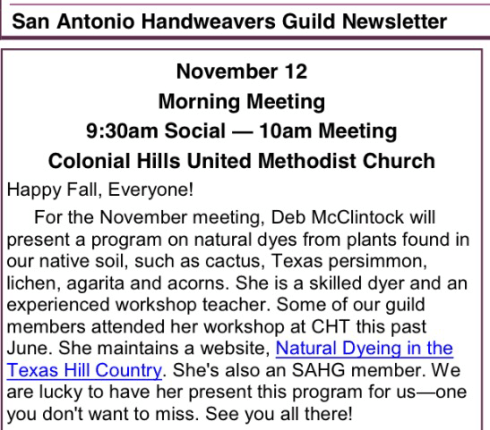

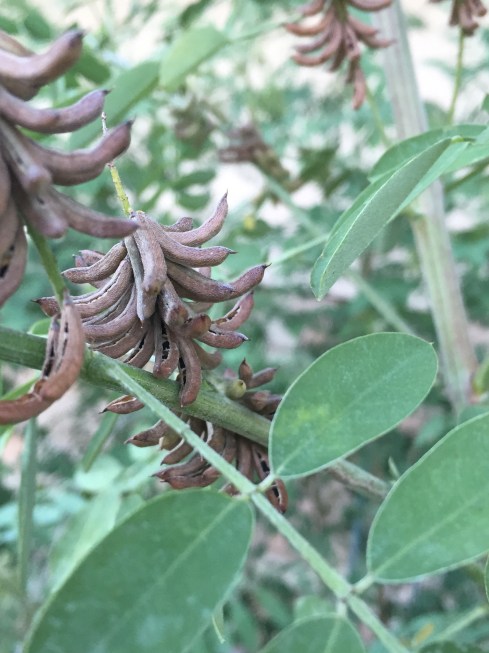
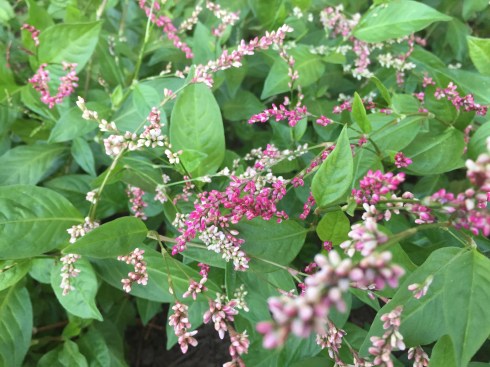
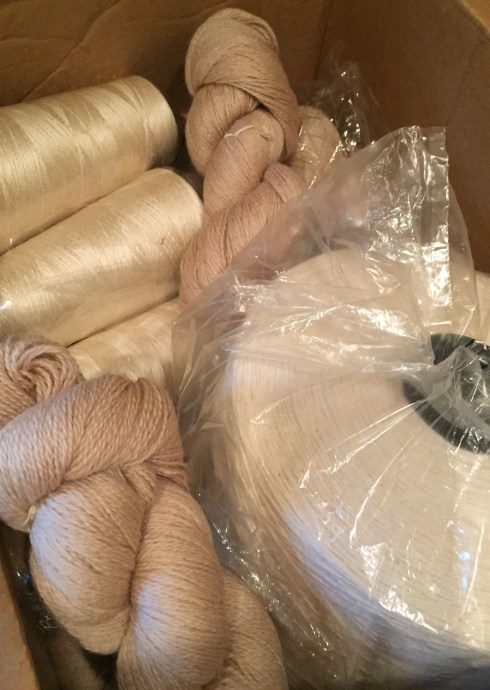

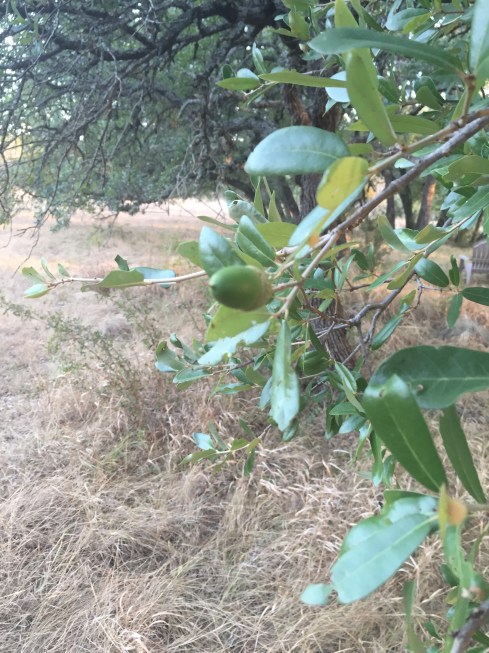



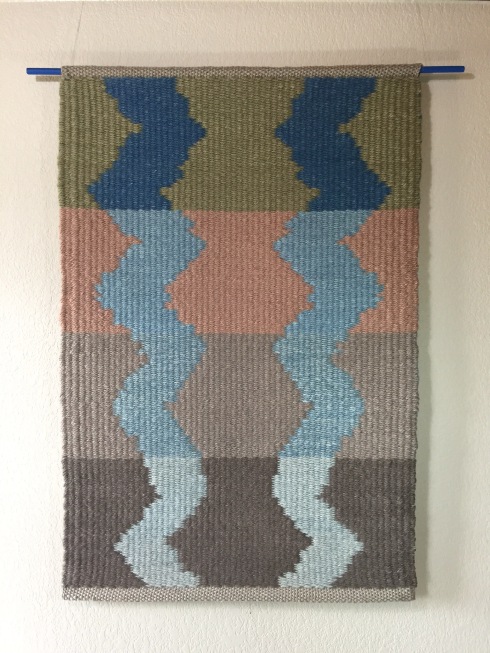
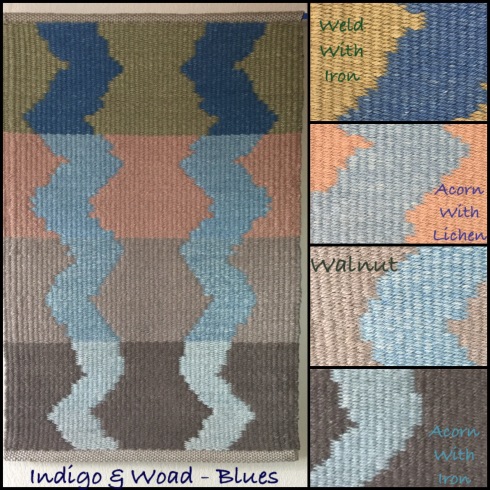
You must be logged in to post a comment.